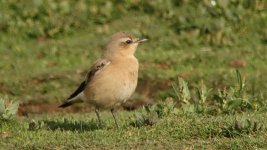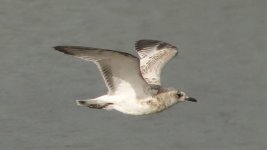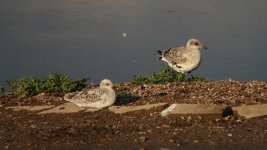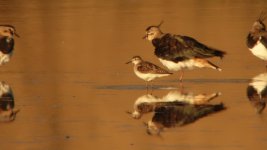Phil Andrews
It's only Rock and Roller but I like it

Wood Sand still at Flashes (best viewed from Cuckoo Hide) plus the obliging Whimbrel, 9 Blackwits and Ringed Plover


More pics. 71 birds in 12 hours missed two and didn't see some I was expecting to see. 12 waders total Lapwing, Ring Plover, Little Ring Plover, Avocet, Black Tailed Godwit, Redshank, Dunlin, Snipe, Common Sand, Green Sand, Wood Sand, Curlew and Whimbrel. 8-P


Not sure I had seen the Wood Sandpiper....the one(s) that were being pointed out as the one always looked to me to have the white "cut in" on the Breast / Wing area as a Common Sand !!....2 very bad distant pics show this......at the time it was the only bird that kept popping in and out of the reeds so I hadn't snapped the wrong one(s). Granted there was NO bobbing up or down from them........Later on we had at least 4 different birds on the same stretch for a few moments before a squabble broke out and everything went missing for a while.
Had at least 2 Green sands close in and a Common coming in and out in one movement so all the suspects were on site...lol.
1 and 2...suspect Wood Sand
3 Common Sand
4 and 5 Green Sands
Bird 2 is a Common Sand but suspect that Bird 1 is the Wood; has that rakish look about it




Bird 2 is a Common Sand but suspect that Bird 1 is the Wood; has that rakish look about it
Juv Wheatear at the Flashes in gate between second and third flashes as per JTB; later in front of the hide.
Also male and juv Redstart right of main hide and Little Egret.
One pleasing trend of recent years is the increased occurrence of Black-tailed Godwit on the reserve where they can often perform at reasonably close range. Attached are a series of charts demonstrating this pattern using three different criteria - number of days present, an estimate of the total number of individual birds occurring (a bare minimum) and a cumulative total of daily counts. I have presented this in two year tranches to try to smooth out any anomalies.






Dave J reports from the Flashes:
Wood Sandpiper, 10 Avocets (4 adults + 6 juveniles), 4 Green Sandpiper, 3 Common Sandpiper, 2 juv Mediterranean Gull, juvenile Redstart
